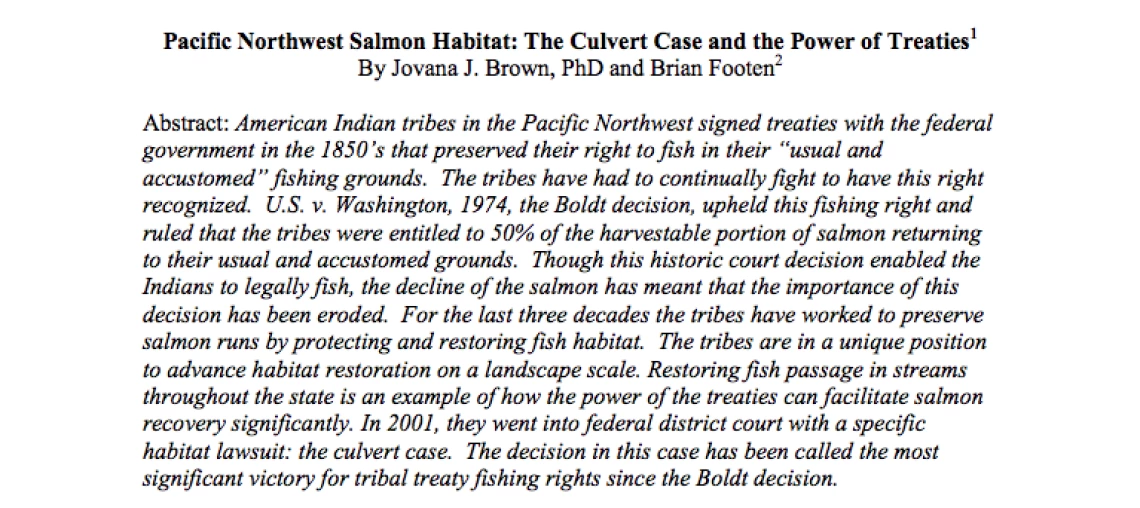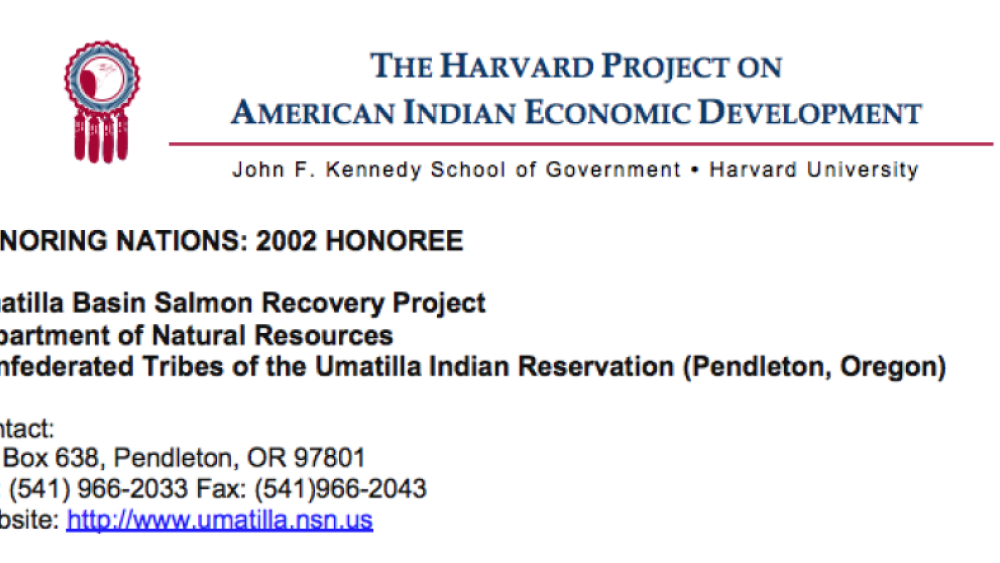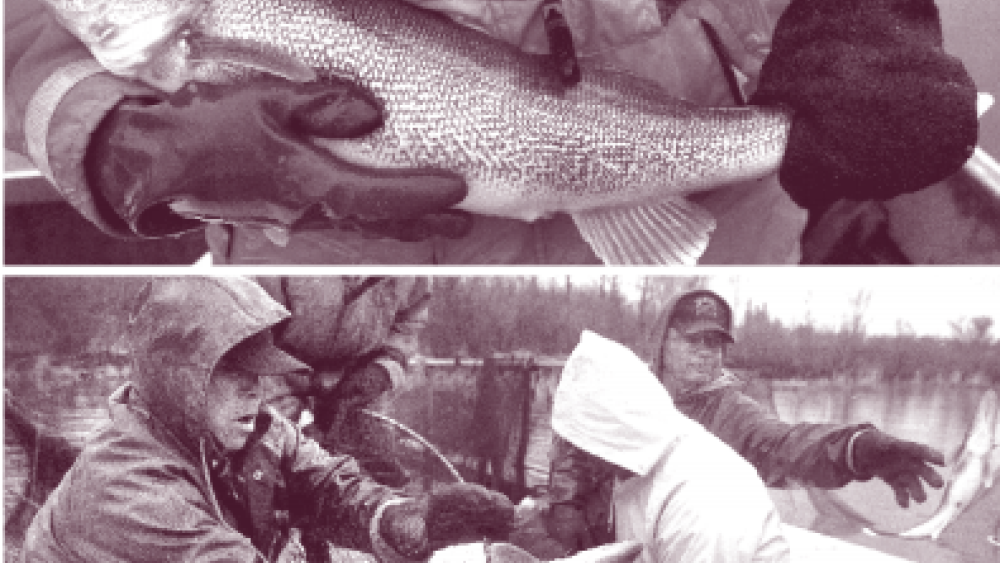American Indian tribes in the Pacific Northwest signed treaties with the federal government in the 1850's that preserved their right to fish in their "usual and accustomed" fishing grounds. The tribes have had to continually fight to have this right recognized. U.S. v. Washington, 1974, the Boldt decision, upheld this fishing right and ruled that the tribes were entitled to 50% of the harvestable portion of salmon returning to their usual and accustomed grounds. Though this historic court decision enabled the Indians to legally fish, the decline of the salmon has meant that the importance of this decision has been eroded. For the last three decades the tribes have worked to preserve salmon runs by protecting and restoring fish habitat. The tribes are in a unique position to advance habitat restoration on a landscape scale. Restoring fish passage in streams throughout the state is an example of how the power of the treaties can facilitate salmon recovery significantly. In 2001, they went into federal district court with a specific habitat lawsuit: the culvert case. The decision in this case has been called the most significant victory for tribal treaty fishing rights since the Boldt decision...
Additional Information
Brown, Jovana and Brian Footen. "Pacific Northwest Salmon Habitat: The Culvert Cases and the Power of Treaties." Enduring Legacies Native Cases Initiative, The Evergreen State College. Olympia, Washington. 2010. Teaching Case Study. (https://www4.evergreen.edu/sites/default/files/Brown...pdf, accessed May 31, 2024)




